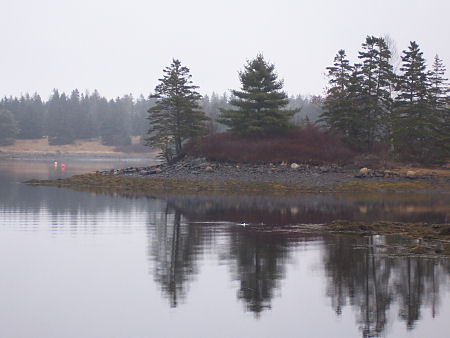
Chickadee Peanut Butter Beak


Life in Nova Scotia


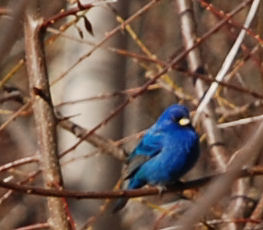
Yesterday, Dennis Robinson, the Chickadee Dude (see our Chirbles the Chickadee pictures), spotted an indigo bunting, described by the Peterson guide as “casual” to Nova Scotia, in the Annapolis Valley.
The startlingly blue-feathered bird watched the chickadees from afar. But finally, he decided that the chickadees had a good thing going and decided to check out some millet seeds (below).
This specimen is unusual in that his lower beak is light-coloured, rather than black as shown in the field guide.
Anyone else ever see an indigo bunting with a beak like this?
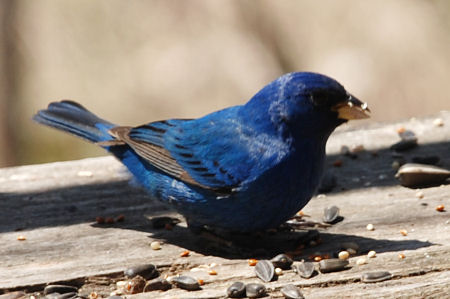
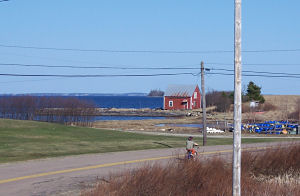
A beautiful day begs a bike ride. We headed for Martin’s Point, which sticks out into Mahone Bay between Oak Island and Indian Point.
Martin’s Point points towards the many Mahone Bay islands that we like to sail to and around.

Like many coastal areas, it has a mixture of century-old homesteads, decades-old bungalows, and some new, modern, expensive homes that the average Nova Scotian can not afford, often built by come-from-aways as a summer home and a place to retire.
People who move here by choice bring a lot to our communities – financial resources, income for local businesses, support for the arts, etc. There is often a conflict in values and lifestyle between them and the local population, however, who have a different sense of belonging to the place and a history that goes back generations.

The result can be tension between groups with different priorities, as we have seen in the Town of Mahone Bay over the issue of whether or not to “develop” the woods and soccer field near the old school which is now a community centre. I could go on.
Meanwhile, it was a sunny Saturday and we enjoyed the peaceful bike ride on Martin’s Point. Not a single car asked to share the road with us.

I’ve just set up a new section of the photo album called “Chirbles the Chickadee, his Friends and his Enemies”. It features the nature photography of the “Chickadee Dude”, Dennis Robinson. He has a special relationship with his chickadees and loves to capture their personalities with his camera.
Some of these photos of Nova Scotia birds are available on various products such as postcards and notecards in our Nova Scotia Gift Shop. Look for Chirbles.

It was a beautiful morning laced with frost which disappeared quickly. The birdsong was joyous, and made me wonder what it was like when the world was young, before DDT and all, when the birds’ habitat was their own.
A song sparrow (right) was hopping around by the shore, blending in with the grasses.

I saw another song sparrow (I think) at the edge of the woods (left). Neither bird was singing, though. They were too busy, I suppose, and didn’t want to advertise their presence on the ground where they are more vulnerable.
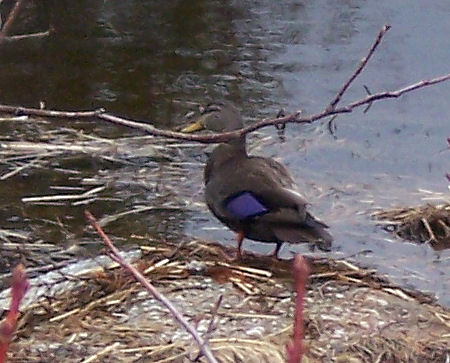
Another duck in our local collection, alongside American black ducks, mallards and buffleheads. I wouldn’t ordinarily get such a photo, but there was a bush between us and the duck was preoccupied, I suppose. The tide was very high, flooding the marshes. It’s duck country.


